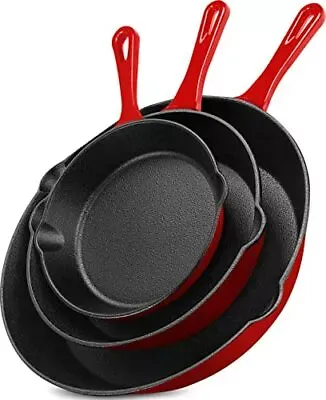
2월 . 17, 2025 13:52
Back to list
Pre-seasoned cheap custom round cookware frying pan cast iron skillet with long handle
The art of seasoning cast iron is one deeply rooted in tradition and culinary history. A well-seasoned cast iron skillet or pot is valued not only for its non-stick properties but also for the way it enhances the flavors of the food cooked within it. Achieving that perfect seasoning layer is a rite of passage for cooking enthusiasts, demanding patience, dedication, and an understanding of the unique qualities of cast iron.
Heating the pan is where the magic of polymerization happens. Experts recommend setting your oven to around 450°F (232°C). Place the pan upside down on the top rack to prevent any pooling of oil, and line the bottom rack with aluminum foil to catch any drips. Bake the pan for about an hour, then let it cool in the oven to room temperature. For optimal results, repeat this process a few times to build a robust, effective non-stick layer. A seasoned cast iron pan should be maintained with care to ensure its longevity. After cooking, clean the skillet with a scrub brush or a gentle abrasive like salt when necessary, and avoid using soap to preserve the seasoning layers. Immediately dry your pan, and consider applying a very thin coat of oil to maintain the seasoning. For cast iron aficionados, understanding the science of seasoning is just as crucial as mastering its application. The practice transforms cooking, allowing food to lift effortlessly off the surface while developing complex, rich flavors. It's this understanding that elevates a cook's prowess in the kitchen, as cast iron can be adapted to a multitude of cooking styles—from searing meats and sautéing vegetables, to baking bread and even making desserts. Seasoned professionals may also delve into acidic foods' interaction with cast iron. While some suggest avoiding them, modern analysis indicates their effects are negligible over short cooking periods with well-seasoned pans. Nonetheless, the authority of experience dictates trust in observation and taste can often provide as much guidance as theoretical knowledge. Longevity in the kitchen relies on both the physical and metaphorical seasoning of cast iron. Developing an authoritative voice on handling these timeless pieces starts with hands-on experience and an openness to learning through trial and error, much like the artisans and chefs who have honed this skill before us. Adopting these tried-and-true techniques cultivates a deep trust in both the tools we use and the meals we create, establishing a legacy of culinary excellence that’s as robust and enduring as the cast iron itself.


Heating the pan is where the magic of polymerization happens. Experts recommend setting your oven to around 450°F (232°C). Place the pan upside down on the top rack to prevent any pooling of oil, and line the bottom rack with aluminum foil to catch any drips. Bake the pan for about an hour, then let it cool in the oven to room temperature. For optimal results, repeat this process a few times to build a robust, effective non-stick layer. A seasoned cast iron pan should be maintained with care to ensure its longevity. After cooking, clean the skillet with a scrub brush or a gentle abrasive like salt when necessary, and avoid using soap to preserve the seasoning layers. Immediately dry your pan, and consider applying a very thin coat of oil to maintain the seasoning. For cast iron aficionados, understanding the science of seasoning is just as crucial as mastering its application. The practice transforms cooking, allowing food to lift effortlessly off the surface while developing complex, rich flavors. It's this understanding that elevates a cook's prowess in the kitchen, as cast iron can be adapted to a multitude of cooking styles—from searing meats and sautéing vegetables, to baking bread and even making desserts. Seasoned professionals may also delve into acidic foods' interaction with cast iron. While some suggest avoiding them, modern analysis indicates their effects are negligible over short cooking periods with well-seasoned pans. Nonetheless, the authority of experience dictates trust in observation and taste can often provide as much guidance as theoretical knowledge. Longevity in the kitchen relies on both the physical and metaphorical seasoning of cast iron. Developing an authoritative voice on handling these timeless pieces starts with hands-on experience and an openness to learning through trial and error, much like the artisans and chefs who have honed this skill before us. Adopting these tried-and-true techniques cultivates a deep trust in both the tools we use and the meals we create, establishing a legacy of culinary excellence that’s as robust and enduring as the cast iron itself.
Previous:
Latest news
-
Dutch Oven Pot with Lid: Cast Iron & More for Perfect CookingNewsSep.01,2025
-
Perfect Fried Eggs: Durable Cast Iron Egg Fryer for BreakfastNewsAug.31,2025
-
Safe & Healthy: Non Toxic Dutch Oven for Everyday CookingNewsAug.30,2025
-
7-Piece Pre-Seasoned Cast Iron Camping Cookware Set-Baixiang County Zhongda Machinery Manufacturing Co., Ltd.|Durable, Pre-Seasoned, Wooden CaseNewsAug.29,2025
-
7-Piece Pre-Seasoned Cast Iron Camping Cookware Set-Baixiang County Zhongda Machinery Manufacturing Co., Ltd.|Durable Cast Iron&Wooden Case IncludedNewsAug.29,2025
-
Bake Perfect Bread with Our Premium Dutch Oven Loaf PanNewsAug.29,2025


